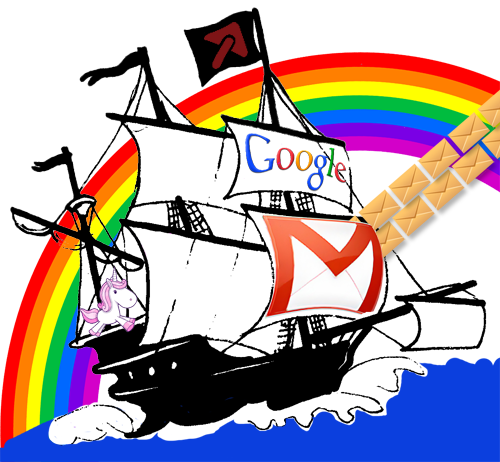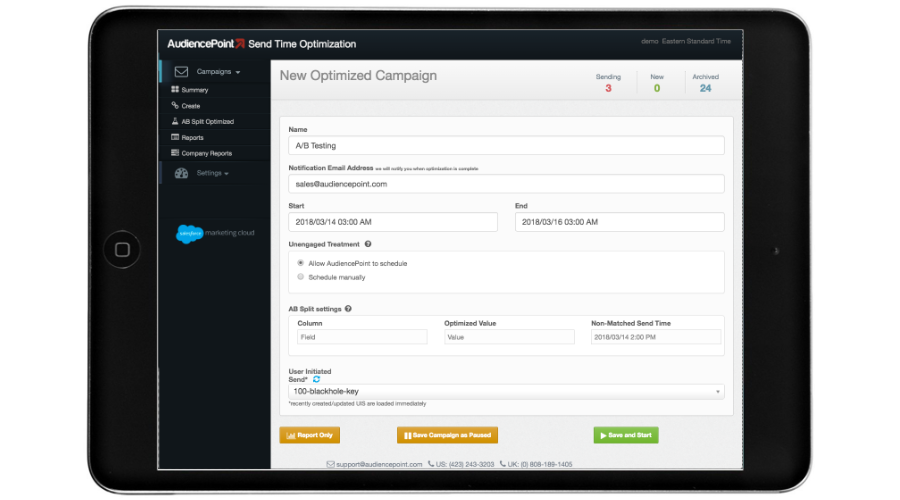AudiencePoint is thrilled to announce our new integration with Klaviyo! AudiencePoint is looking for partners to pilot our...
If you’re sending marketing emails, understanding the importance of engagement is crucial. Yet, navigating the best strategies to enhance this engagement, including tracking it and knowing what makes an effective engagement email campaign, can often seem daunting. This article not only dives into what customer engagement email examples look like but also guides you through crafting your own compelling engagement email campaigns. Ready to elevate your email strategy and see tangible results? Read on to learn more and discover how to connect with your audience like never before.
What is an Engagement Email Campaign?
An engagement email campaign is an email marketing customer engagement strategy focused on building meaningful interactions with your audience. Typically, engagement email campaigns are focused around improving certain metrics that have to do with email engagement, such as:
- Bounce rate: The number of emails that are bounced (not accepted by the receiving domain) divided by the number of emails sent.
- Click-through rate: The percentage of email subscribers who clicked on a link within your email.
- Conversion rate: The percentage of email recipients who took an intended action after reading your email, such as purchasing products or subscribing to something.
- Open rate: The percentage of email subscribers who opened the email you sent to them.
- Read time: The amount of time the viewer spends reading your email.
All of these are important metrics to understand how your audience responds to different aspects of your emails. Working to improve these metrics through an engagement campaign will help you build better connections with your email subscribers, which leads to more sales and a better company reputation.
How Do You Engage the Audience in an Email?
Keeping your subscribers engaged is vital for effective email marketing. When readers find value in the things you write, they will be more likely to consistently read your emails and look forward to receiving them. A high rate of subscriber engagement also helps to prevent your emails from being bounced or being sent to spam. Here are a few ways you can effectively engage your audience:
- Call to action: Your emails should have an intended purpose and a call to action that helps readers know what you want them to do next. This will increase your link clicks and other important metrics.
- Design: Well-designed emails that are easy on the eyes help make the reading experience better, which improves email read time, click-through rates, and other important metrics.
- Know your audience: When writing emails, it’s essential to know what your audience values and create content that solves problems or helps with their wants and needs.
- Send time: Email send time is important, so your subscribers receive your emails at a time when they will have a chance to read them. People receive a lot of emails in a day, so sending them at an optimal time can help get your audience’s attention.
- Subject lines: Having a good email subject line that catches your subscribers’ attention is one of the best ways to increase your open rates and email engagement.
If you work on these elements of your emails, you will see improved engagement metrics, and your subscribers will have a better reading experience.
Segmentation and Personalization: The Key to Unlocking True Engagement
Once you’ve mastered the basics of engaging your audience through captivating design, compelling content, and strategic timing, the next step to elevating your email campaigns is through segmentation and personalization. These strategies take your engagement efforts from broad and general to specific and highly targeted, ensuring that each subscriber feels valued and understood.
Segmentation is the process of dividing your email list into smaller groups based on specific criteria, such as demographics, purchase history, or engagement level. By segmenting your list, you can tailor your messaging to better suit the interests and needs of different audience segments. For instance, a fashion retailer might send different email content to those who have shown an interest in menswear versus those who prefer womenswear.
Personalization goes a step further by customizing the email experience for each subscriber. This can range from addressing them by name to recommending products based on their past purchases or browsing behavior. Personalization is about showing your subscribers that you pay attention to their preferences and are committed to providing them with relevant and valuable content.
Implementing segmentation and personalization in your email campaigns requires a good understanding of your audience and the ability to collect and analyze data about their behaviors and preferences. Many email marketing tools offer features that help you segment your list and automate personalized emails, making it easier for you to create highly targeted and effective campaigns.
By focusing on segmentation and personalization, you’re not just sending emails; you’re building relationships. Each email becomes an opportunity to connect with your subscribers in a more meaningful way, leading to higher engagement rates, increased loyalty, and ultimately, more conversions. Start small by segmenting your list into a few broad categories, and as you become more comfortable, you can begin to refine your segments and personalize your content even further.
With segmentation and personalization, your emails will resonate more deeply with your audience, encouraging not just a momentary click or glance, but a lasting engagement that benefits both your subscribers and your brand.
Customer Engagement Email Examples
Here are a couple examples of customer engagement emails so you can better understand how to create emails that drive engagement.
Example #1
This first example is a sporting goods company having a weekend sale for all baseball equipment. The email aims to drive link clicks to make a purchase or traffic to their store.
Subject line: Home Run Savings – 20% Off All Baseball Equipment this Weekend
Body: If you’re looking for baseball equipment, now is the time to buy. Take 20% off on all baseball equipment and accessories this weekend! You won’t want to miss out on this grand slam of an event. Click the link below to shop now!
Why is This Email Successful?
This email works because it is targeted toward the single intent and purpose of the email, to drive sales and traffic to the company website. It is simple and to the point because the main attention-getter of 20% savings would be interesting for people searching for baseball equipment.
Timing and target marketing are also important. For example, if it is close to baseball season or the company has noticed a lot of people searching for baseball equipment, this email will see greater success since it is targeted toward the audience’s needs.
Example #2
This next example is of a company that has a mindfulness app. The goal of the email is to provide value to the reader while also trying to drive app installs and traffic to a new program they released.
Subject line: 3 Tips to Relieve Stress for Your Upcoming Work Week
Body: Stress. It’s a normal part of life. We all experience it, and we all must manage it.
As you are waking up this Monday morning, here are 3 simple ways to relieve stress during the work week.
- Take a deep breath – When you experience a stressful moment, take some time to focus on your breathing. Close your eyes, calmly take some deep breaths, and then refocus on your work.
- Show appreciation – Show appreciation for something good in your life. Work can be stressful, but it can also be rewarding. Think about the positives of your job and why you choose to do it.
- Unwind – After you finish work, take some time to relax and unwind. Do something that makes you happy, take some time to relax, or practice mindfulness exercises.
If you need additional help this upcoming work week, check out our new program, The Mindful Work Week. Click the button below for a link to download our app or for quick access to our new mindfulness program.
Why is this Email Successful?
This email provides value to an audience interested in mindfulness techniques by sharing three ways they can relieve stress. It also has a targeted call to action and purpose that integrates well with the new mindfulness program they released. The email send-time is also optimized for Monday morning when many people are just about to start their work week. The email is targeted and purposeful with precisely what they want to achieve while still providing a good reading experience.
Conclusion
Now that you’ve seen some examples and know the purpose of a customer engagement email strategy, you will be on track toward creating a successful and engaging email campaign. For more help on improving customer email engagement and re engagement, AudiencePoint’s email insight software can help you analyze real-time email metrics, optimize your send times, and view important data about your list of email subscribers. Understanding all this important data will set you up for greater email marketing success.
Contact AudiencePoint to learn more today!





